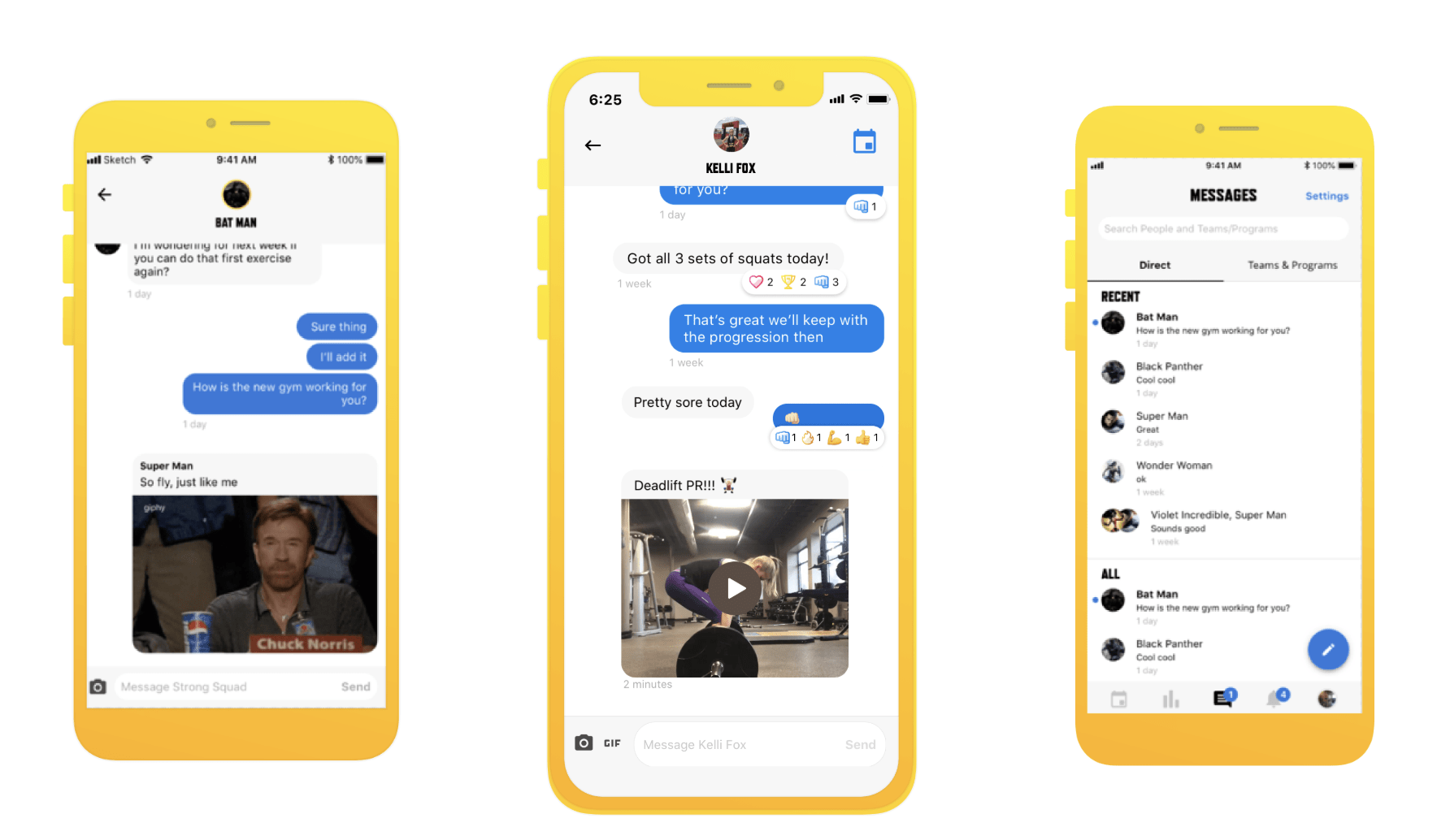How to Simplify the Weightroom: Q&A with Dan John
Strength & ConditioningIf your life is crazy, make your workouts boring. If your life is boring, make your workouts crazy. Sometimes it is about making things simple in your life so you don’t have to stress over them.
In this article, Dan gives insight on how to simplify your workouts and reduce the stresses you have in life.
Dan John
Dan John has spent his life with one foot in the world of lifting and throwing, and the other foot in academia. An All-American discus thrower, Dan has also competed at the highest levels of Olympic lifting, Highland Games. He also holds the American record in the Weight Pentathlon.
Dan now gives workshops around the world, writes books, hosts The Dan John Podcast, and works with private clients from all walks of life including professional athletes and military personnel.
// Dan John’s Wisdom for the Weight Room and Life
I vividly recall attending a seminar presented by a well-known coach several years ago. At some point in the day, the discussion pivoted from technique pointers to answering the age old, “Who’d you most like to meet?” question. A lot of my fellow students named Hollywood A-listers and pro athletes, but when it came time for the coach to decide, he immediately said, “Dan John.”
Dan will likely issue a peal of hearty laughter upon reading this, but self-deprecation aside, there are plenty of good reasons for his peers to admire the man and his body of work, which spans 40 years of coaching and state and national titles as a shot putter, discus thrower, weightlifter, and Highland Games competitor. In his new book Attempts (#12 on his bibliography), Dan expounds on some of his best-known one liners, like “How many rabbits are you chasing?”, “Enough is enough; more is just more,” and “Last throw, best throw.” Here are some further insights from Attempts that will help you simplify your training and how you approach life in general.


In Attempts, you have a simple piece of advice for lifters: Put weights overhead. Pick weights off the floor. Carry weights. How did you come up with this approach?
It’s the story of my life. The very first thing I ever got for weightlifting was from Sears: Ted Williams Barbell and Dumbbells Exercise Courses and Routines. This was in 1965 and I was eight years old. Basically, if you followed the guide, you picked weights up off the ground and you put them up overhead. You do two sets of five and 10 exercises per workout, which, by the way, still is a pretty good approach.
When I blew my wrist apart in 2002, my doctor told me I’d never lift weights again, which was pretty hard to take given how important it had been to me since 1965. My friend Mike Rosenberg encouraged me to start carrying weights. So I began dragging sleds long before prowlers were a thing and carrying heavy bags. If you look at the cover of my book Never Let Go, you’ll see that I’m carrying a massive bag. What you might not notice is that I have a cast on my left arm. Later, when I started my newsletter, Mike told me I needed a mission statement. One of the main points is that there are three kinds of weightlifting: put weights overhead, pick them up off the ground, and carry them for time or distance.
If I could get you to do military press, some form of deadlift, and farmer walks, five days a week for a couple months, weird stuff would begin to happen. And the weirdest stuff is that you’d look better, feel better, and throw stuff farther.
You mention that just showing up to train for 40 days will yield results and quote Coach Ralph Maughan’s saying, “Little and often over the long haul.” Can you share more about the role of consistency in delivering strength gains?
I’ve joked many times that I’ve been the national champion in a lot of different sports because when they said, “Be there at nine o’clock on June 26 in Spokane,” I was there. There was always someone else who was far better than me, but they didn’t show up. Every good coach I’ve ever had has explained academics to their athletes this way: Go to class, never miss class, and show up. You want to be a good father? Show up and be around. No, don’t try to be a great dad once or twice, but be an OK dad 365 days a year. Your kids will turn out OK.
Woody Allen once said, “80 percent of success is showing up.” To that I’d add, “and to keep going.” People don’t like to do a program for 40 days. They usually do it for two days and then stop. Any idiot can start something. It’s a little different to stick it out and hang in there. I once had someone tell me they read my book Mass Made Simple, but got hung up on workout eight. I asked them, “Did you do workout seven yet?” They replied, “No, but I read it and I didn’t like it.” They didn’t actually do the program at all, so they didn’t know that the eighth workout was easy so they wouldn’t feel like crying after how hard workout seven was. It’s a lost art: actually doing things. Anyone who reads my newsletter will have heard this 100 times, but I have a three-part formula: Show up, don’t quit, ask questions. Most of life’s successes probably come from this.
What are Darwin’s definition of fitness and the old Nordic meaning, and how can someone apply these?
I see them as being fairly close together. Darwin teaches that the term fitness means answering the question “Fit for what?” In other words, are you fit for a certain task? That’s why birds’ beaks and talons adapt and why certain fish are flat, round, or sleek. You adapt to the task. The old Nordic word “fit” means to knit. The best way to explain that to somebody is by asking them to picture the way a jigsaw puzzle fits in place. I’m a big strong guy and if I’ve got a pair of scissors, I can make jigsaw puzzle pieces fit. But when I get done, it’s not going to look very good. Sometimes what “fit” means is getting the task done with the best tool and in the best way. That’s why for me, fit is a much more elegant thing than just being a sweaty mess at the end of a training session.
It drives me crazy when someone tells me that this athlete is the fittest person in the world, because I’ll always think, “Fit for what?” As a discus thrower, if I hit 244 feet, then I’m the fittest thrower in history, even if it takes me an hour and a half to get my breath back. To say that a triathlete is “fitter” is to miss the definition of the term. It depends on what you’re attempting to do and what your focus is. You could try to be a jockey and an offensive lineman at the same time, but you’ll probably not be very good at either one.
In Attempts, you make the point that when life is crazy, you need sanity in your training. Where did that idea come from?
I used to work with this woman called Maxine. She’s the type of person who doesn’t put up her ornaments until after Christmas Day because that’s the real Christmas season, whereas beforehand it’s Advent. If we were meant to have a break at 10:30 and I started mine at 10:15 but returned at the same time as everyone else, she’d let them know it. Everything had to be in its place. A person like Maxine can follow a random workout that some trainer has scribbled on a whiteboard because her life is so structured.
But if your life is crazy, you need to know that on Mondays, we’re going to push, pull, hinge, and squat for three sets of five with reasonable loads. And then we’re going to do one loop of farmer walks. On Wednesdays, we’re going to push, pull, hinge, squat for three sets of eight. And then we’ll do some medicine ball throws. Fridays are our heavy days, so we’ll push, pull, hinge, squat for five sets of three. And then we’ll mix medicine balls with some heavy carries. Thank you, we’ll see you Monday. That’s a boring workout, right? But if your life is loco, you need your training to be sane. And if your life is industrial, it’s okay to go crazy. A lot of people misunderstand that.
During the COVID-19 lockdown, I decided I wasn’t going to do my usual fast-mimicking diet, which is just 500 calories of nuts, olives, and vegetables a day for five days. Every time I looked at the news, I saw more Americans dying and more divisiveness, so the last thing I needed was more stress. It all depends on where you want to have crazy in your life. If your life is crazy, make your workouts boring. If your life is boring, make your workouts crazy.
TAKE YOUR TRAINING
TO THE NEXT LEVEL
The TrainHeroic Marketplace
TrainHeroic brings online training and strength programs to life with an unmatched imersive training experience delivered directly to your phone. Browse our Marketplace for thousands of programs or take your training up a notch by joining an online community with fresh programming and coaching by some of the biggest names in the strength game starting at $15 / month.

READY TO TRY TRAINHEROIC?
Our powerful platform connects coaches and athletes from across the world. Whether you are a coach or trainer looking to provide a better experience for your clients, or you’re an athlete looking for expert programming, click below to get started.
Want more training content?
More coaches and athletes than ever are reading the TrainHeroic blog, and it’s our mission to support them with the best training & coaching content. If you found this article useful, please take a moment to share it on social media, engage with the author, and link to this article on your own blog or any forums you post on.
Be Your Best,
TrainHeroic Content Team
HEROIC SOCIAL
HEROIC SOCIAL
TRAINING LAB
Access the latest articles, reviews, and case studies from the top strength and conditioning minds in the TH Training Lab


